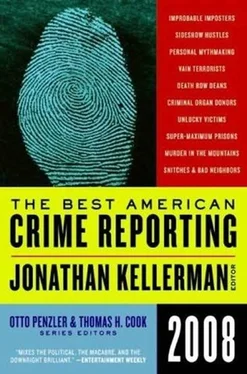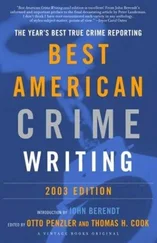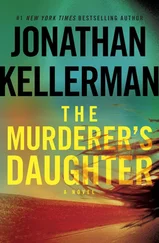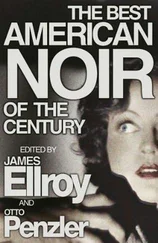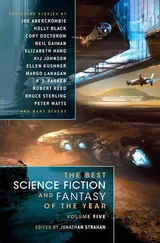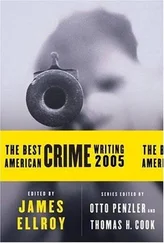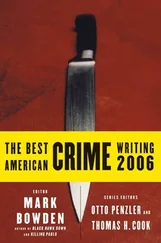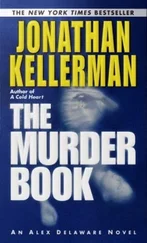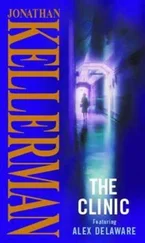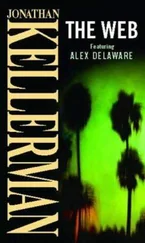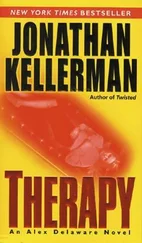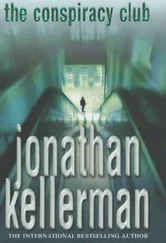As he began his testimony, a commotion electrified the hallway outside. Several friends of Boo-Boo and Moo-Moo tried to rush into the courtroom carrying cell phones, which they held near their thighs, fingers resting on the camera buttons. Detective Baier was also in the hall, awaiting his turn to testify. He spotted the cell phones and stepped in front of the men, barring their path to the door. “Whoa, you can’t come in here,” he told them. “It’s a closed courtroom.” This was not true, but it kept the men from entering. Then, for laughs, Baier took out his own cell phone and took pictures of them.
Incidents of intimidation at the courthouse are no longer aberrations. Gang members sometimes line the courthouse steps, forming a gantlet that witnesses and jurors must walk through. Family members of defendants have come to court wearing STOP SNITCHING T-shirts and hats. In a Pittsburgh case last year, a key (though hostile) prosecution witness came to court in STOP SNITCHING gear. He was ejected because his garb was considered intimidating to other witnesses, and without his testimony, the district attorney dropped the charges. At the close of a Baltimore trial two years ago, jurors were so frightened of the defendants and of gang members in the gallery that the forewoman refused to read the guilty verdict aloud; so did another juror asked to do so by the judge. The judge eventually read the verdict herself and, as a precaution, had sheriff’s deputies accompany the jurors out of the building.
DOWERY ENDURED A WITHERING CROSS-EXAMINATION, but he escaped the stand largely undamaged. Nosher’s two other eyewitnesses did not. Dickerson developed sudden memory loss, claiming not to recall key details of what she had seen. Then Love’s lawyer got her to admit she was probably high on heroin when the shooting took place. As for Bassett, he backed up right away. “First, I would like to say I don’t appreciate being here against my will,” he said in a high, squeaky voice that seemed incongruous coming from a man of his bulk. He went on to say that he never saw Jay after the robbery, never saw anyone shoot Jay, never saw a white Lexus at the end of Bonaparte, and never told Baier that he had seen any of these things. When Nosher showed him the photo lineup he had signed, in which he had identified Parker as the shooter, Bassett said that Baier “basically picked the dude out for me.” What about his taped statement? He had been forced to make it, he said. “I gave them the plot of the story; they put their own characters with it.”
The jury heard from other prosecution witnesses: Craddock talked about seeing the Lexus and part of the license tag. Baier testified about the investigation, stating that he had not coerced Bassett or helped him pick photos from the lineup. A telecommunications expert testified about the location of Love’s cell phone. Video from the warehouse surveillance camera was shown to the jury. The defense put on no witnesses of its own. But after two days of deliberation, the jury announced that it could not reach a unanimous verdict. Judge Cox was forced to declare a mistrial.
AT FIRST, the prosecutors planned to retry the case. But over the summer, the federal government decided to take over. (With Dowery’s cooperation, it had already been working on a case against Love, Parker, and James Dinkins, a man police believe was involved in Dowery’s shooting.) In late August, Parker, Love, and Dinkins were indicted on federal charges of conspiracy to distribute heroin. As of this writing, the trial is scheduled to begin in late March.
Federal prosecutions are one method cities are using to combat witness intimidation. A law passed by Congress last December explicitly makes witness intimidation in a state case grounds for federal prosecution. Rod Rosenstein, the U.S. attorney for Maryland, says the federal government has a big advantage over the states in breaking through the code of silence: leverage. Federal sentencing guidelines provide for long prison terms and, unlike the state system, do not allow for probation or parole. “We don’t appeal to their sense of civility and morality,” Rosenstein says. “We get a hammer over their heads. They realize that cooperating is the only way they can get out from under these hefty federal sentences.”
Some states are looking to bring their laws into line with federal practices. The Maryland law Jessamy helped pass elevates witness intimidation from a misdemeanor to a felony punishable by a minimum of five years. It also allows prosecutors to introduce a witness’s prior statements even if the witness isn’t at the trial, if they can provide “clear and convincing evidence” that the defendant was responsible for the witness’s absence. Still, Jessamy isn’t satisfied. The new law excludes child-abuse and domestic-violence cases. And rarely can prosecutors obtain the kind of evidence of intimidation it requires. Even when they can, Jessamy says, trying to persuade judges to apply the law “is like pouring water on a stone.”
Cities are also pushing to increase funding for witness assistance. The federal law passed in December allows the U.S. attorney general to dispense grants to states for witness protection. But Congress appropriated only $20 million annually for these grants through 2010. By contrast, a bill that Representative Elijah Cummings of Maryland introduced two years ago would have provided $90 million annually to support state witness-assistance programs; that bill died in committee. Since the start of the new congressional session, in January, several bills to strengthen the protection of witnesses in state cases have been introduced; as of this writing, they are all still in committee.
Federal prosecutions, new laws, more money-these are the blunt instruments of policy-makers. They might chip away at the edges of the problem. But to really reduce witnesses’ reluctance to participate in the judicial process will require something beyond the abilities of cops and courts: a cultural transformation in America’s inner cities. In Philadelphia, Boston, and Washington, D.C., authorities have tried to prohibit the sale of STOP SNITCHING clothing (they succeeded in Washington). But there is no indication that criminalizing a fashion and political statement will alter the underlying sentiment. Leonard Hamm, a long-serving Baltimore police officer who returned to head the city’s department in 2004 after an eight-year absence, sees the problem this way: “I think that the community is going to have to get sick and tired of the shootings and the killings and the memorial services. And all we can do as police is be there when they say they are ready.” But what if the community is never ready? Many inner-city neighborhoods have no community. The institutions that once held them together-the churches, the associations, the businesses-are shells of what they were, if they exist at all.
FOR DOWERY, the mistrial was unnerving. Yet in some ways it was better than a guilty verdict. He was still planning to testify for the federal government against Love, Parker, and Dinkins. This would further postpone his gun case. In addition, as a federal witness, he began receiving some token financial assistance from the FBI.
Dowery’s family would visit him in the suburbs. Still, he missed them, and he missed his friends. So he occasionally sneaked back to the old neighborhood for a day or two, usually staying with his mother and trying to keep a low profile. In the spring, he proudly watched his two eldest sons graduate from high school. And he didn’t want to skip Thanksgiving at his aunt’s house, on Bartlett Avenue. “He was tired of hiding out,” his aunt, Joyce Garner, told me.
On Thanksgiving night, more than 20 members of Dowery’s family gathered for a feast. Dowery was in a good mood, reminiscing about old times. Garner remembers that he came to talk to her as she was cooking. She asked if he was worried about being back in the neighborhood. “He just talked about the Lord to us and gave us a big hug and said, ‘God’s got it,’” she recalled. Toward the end of dinner, Dowery excused himself. He wanted to run across the street to buy a pack of cigarettes and have a beer.
Читать дальше
